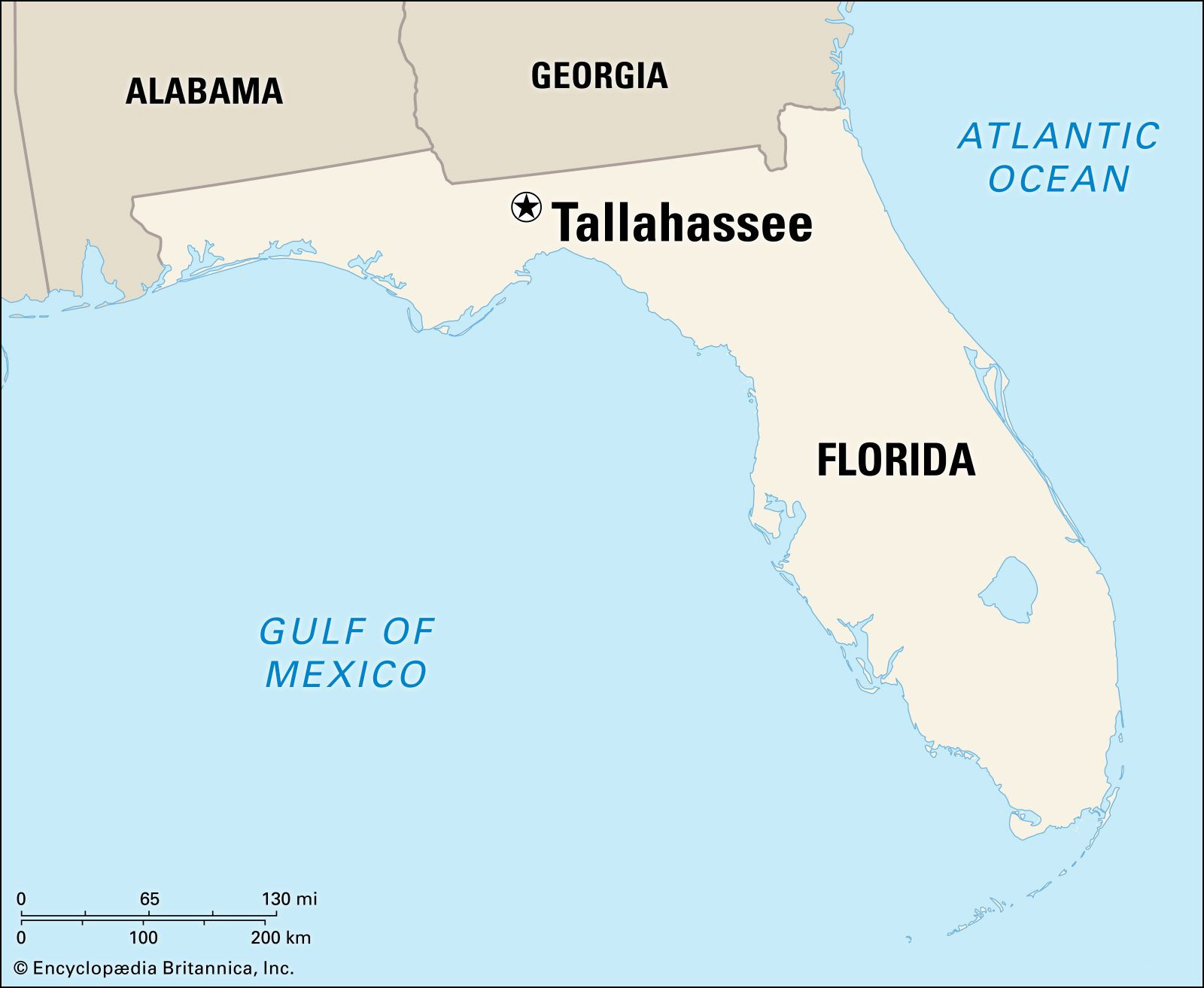Tallahassee, the capital city of Florida, is located in the state’s northern panhandle region. Situated in Leon County, it lies approximately midway between Pensacola to the west and Jacksonville to the east. This central position in northern Florida has been key to Tallahassee’s historical and contemporary significance.
The area’s history stretches back centuries. Before European arrival, the land was inhabited by Apalachee and Creek peoples. Spanish explorer Hernando de Soto camped here in the 16th century, and Franciscan missions were later established, including Fort San Luis, which served as a headquarters until its destruction in 1704. When Florida became a U.S. territory in 1821, it had dual capitals: St. Augustine and Pensacola. To find a more central and accessible location, Tallahassee, derived from a Creek word meaning “old town,” was chosen as the capital in 1824. The city’s iconic capitol building, with its distinctive dome added in 1902, stands as a testament to its long-standing political role. Interestingly, during the American Civil War, Tallahassee held the unique distinction of being the only Confederate capital east of the Mississippi River not captured by Union forces.
Today, Tallahassee serves as a vital hub for trade and distribution in a region known for lumber, agriculture, and livestock. Its economy is diverse, with printing, publishing, electronic equipment manufacturing, and metal product industries contributing to its economic base. However, the service sector, particularly government and higher education, forms a significant pillar of Tallahassee’s economy. The city is home to several prominent educational institutions, including Florida Agricultural and Mechanical University (FAMU), Florida State University (FSU), and Tallahassee Community College, making it a major center for learning and research in the region.
For visitors and residents alike, Tallahassee offers a blend of history, culture, and natural beauty. Local attractions include the Tallahassee Museum of History and Natural Science, the Museum of Florida History, and the Columns, the city’s oldest building dating back to 1830. The city also hosts the annual Springtime Tallahassee festival, celebrating its founding. Nature enthusiasts can explore the nearby Apalachicola National Forest, Alfred B. Maclay State Gardens, and Lake Jackson Mounds State Archaeological Site. A short drive south leads to Edward Ball Wakulla Springs State Park and the St. Marks National Wildlife Refuge on Apalachee Bay, showcasing the diverse ecosystems of the Florida panhandle.
 Aerial view of Tallahassee, Florida, showcasing the state capital nestled in the northern panhandle region.
Aerial view of Tallahassee, Florida, showcasing the state capital nestled in the northern panhandle region.
Incorporated in 1825, Tallahassee has grown into a significant urban center. In 2020, the city’s population was recorded at 196,068, with the Tallahassee metropolitan area encompassing 384,298 residents. As both the state capital and a thriving city in its own right, Tallahassee holds a unique place in Florida’s landscape, blending historical significance with modern dynamism in the heart of the northern panhandle.
